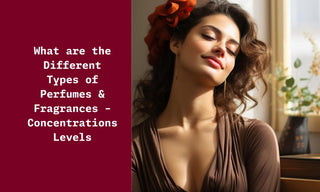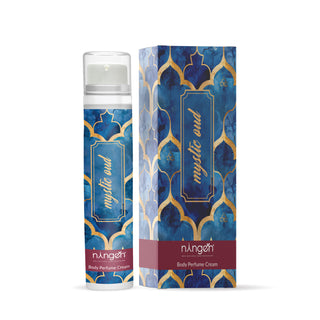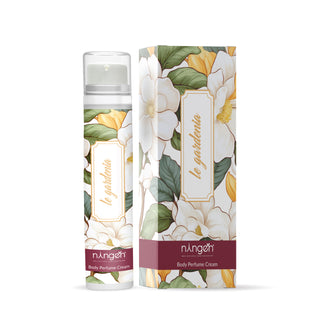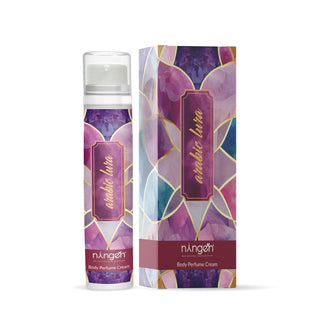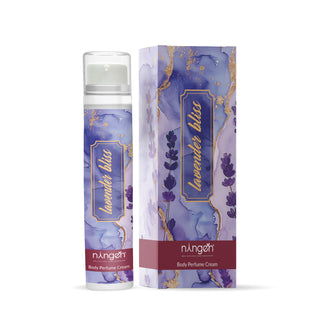Welcome to our blog on What are the Different Types of Perfumes & Fragrances & Concentrations Levels.
Fragrance is a powerful form of self-expression, capable of evoking memories, emotions, and moods. In this blog, we'll explore the diverse world of perfumes, from classic floral scents to exotic oriental blends, and everything in between. Whether you're a seasoned fragrance enthusiast or a newcomer eager to explore the art of scent, this guide will provide valuable insights into the fascinating realm of perfumery.
Join us as we embark on a fragrant journey through the intricate layers and captivating notes of various perfume compositions.
Table Of Content;
Understanding Fragrance Concentration
- What is Fragrance Concentration?
- Why is Fragrance Concentration Important?
- Different Fragrance Concentration Levels
Different Types of Perfumes & Fragrance
Factors to Consider When Choosing a Signature Scent
Catering to Different Skin Types
- Fragrance Recommendations for Sensitive Skin
- Fragrance Recommendations for Oily Skin
- Fragrance Recommendations for Dry Skin
Factors That Affect Fragrance Longevity
Tips for Maximizing Fragrance Longevity
Perfumes & Fragrances
Perfumes are scented liquids that people put on their bodies to smell good. They come in different smells, like flowery, fruity, or musky. People use perfumes to feel fresh, confident, and attractive.
Perfumes and fragrances are essential in the art of personal scenting, often reflecting one's personality. Understanding the types and terminologies is crucial in selecting the perfect perfume. There are various fragrance concentrations: Eau de Parfum (15%-20% perfume oils), Eau de Cologne (2%-4% oils), and the lowest concentration, Eau de Toilette (5%-15% oils). These concentrations influence the longevity and intensity of the scent.
Fragrance families categorize scents into floral, woody, fresh, and oriental types. Floral scents are popular and characterized by the romantic essence of flowers. Woody fragrances, with notes such as cedar and sandalwood, evoke earthiness. Fresh fragrances include zesty or aquatic notes perfect for a light, invigorating effect, while oriental perfumes feature spicy notes like cardamom, ideal for a bold statement.
Fragrances are composed of three types of notes: top (initial impression), middle (heart of the perfume), and base notes (lasting impression). For those with sensitive skin, it's crucial to consider the alcohol-free one and opt for higher perfume oil formulas with less irritant potential.
To find your signature scent, explore the different types of fragrances and consider the occasion, season, and personal preference. Remember, the perfect perfume complements your individuality.
|
Fragrance Type |
Concentration of Perfume Oils |
|
Eau de Parfum |
15%-20% |
|
Eau de Toilette |
5%-15% |
|
Eau de Cologne |
2%-4% |
Understanding Fragrance Concentration
When delving into the world of perfumery, one of the most critical factors to consider is fragrance concentration. This measure not only affects the intensity of a scent but also dictates its longevity on the skin after application. From the potent Parfum to the light and breezy Eau Fraîche, the concentration of fragrance within a bottle can significantly change the olfactive experience.
What is Fragrance Concentration?
Fragrance concentration in perfumes is the ratio of pure perfume oils and other ingredients in a fragrance composition. The potency of a perfume is directly proportional to its concentration level. This includes the highest level, Parfum, with 20%-40% concentration of perfume oils, followed by Eau de Parfum (EDP) with 15%-20%, down to the lightest form, Eau Fraîche, which has 1%-3%. The variations allow for different preferences and occasions, with stronger concentrations ideal for lasting impact and lighter concentrations suitable for a subtle aroma.
Why is Fragrance Concentration Important?
The significance of fragrance concentration lies in its direct impact on the durability and perception of a perfume. A higher concentration of pure perfume oils usually equates to a richer, more complex scent that persists for an extended period. This staying power, or tenacity, enhances the ability of the fragrance to leave a lasting impression. From a consumer's perspective, while higher concentrations come with a higher price tag, they often translate to a more luxurious and enduring experience. For those who prioritize scent longevity and depth, paying attention to the concentration level becomes a quintessential part of selecting the right perfume.
Different Fragrance Concentration Levels
Fragrance concentrations can be broken down into several categories:
- Parfum (Extrait de Parfum or Pure Perfume): Boasting the highest concentration of fragrance oils (20%-40%), this category guarantees a long-lasting scent that can endure for the whole day.
- Cream-based perfume: Cream-based perfumes consist of a high concentration of fragrance oil & offer a long-lasting and convenient alternative to traditional liquid fragrances. With a smooth, moisturizing texture, these perfumes contain a higher concentration of fragrance oils, ensuring a long-lasting scent.
- Eau de Parfum (EDP): With a slightly lower concentration than Parfum (15%-20%), EDP still offers considerable scent longevity, usually maintaining its aroma for around four to five hours.
- Eau de Toilette (EDT): A popular choice for everyday wear, EDT contains 5%-15% fragrance oils, providing a moderate time frame for wear.
- Eau de Cologne (EDC): Known for its refreshing qualities, EDC boasts a concentration of 2%-5%, making it a lighter and often more affordable option.
- Eau Fraîche: As the most diluted version, with 1%-3% perfume oils, it is ideal for those seeking a hint of fragrance without overwhelming presence.
Understanding the gradation of fragrance concentration is paramount when navigating the vast array of perfumes available. It's not merely about the scent itself but how it is carried by the concentration of its components—a crucial detail for anyone on the quest to find their perfect perfume.
Different Types of Perfumes & Fragrance
Discover the Enchanting World of Perfumes & Fragrances
Navigating the lush landscape of perfumes and fragrances can be as complex as it is aromatic. At heart, fragrances are crafted from a symphony of notes: top or head notes are the initial burst, middle or heart notes form the core, and base notes linger the longest. These notes combine within different fragrance families, which include the likes of floral, fresh, woody, and spicy.
When selecting a fragrance, concentration matters. Here's a quick guide:
|
Type of Perfume |
Concentration of Fragrance Oils |
Concentration of Alcohol |
Lasting Duration |
|
Perfume (Parfum) |
Highest (~20-30%) |
Lowest |
6-8 hours |
|
Eau de Parfum (EDP) |
High (~15-20%) |
Moderate |
4-5 hours |
|
Eau de Toilette (EDT) |
Moderate (~5-15%) |
High |
3-4 hours |
|
Eau de Cologne (EDC) |
Lower (~2-4%) |
Higher |
2 hours |
|
Eau Fraiche |
Lowest (~1-3%) |
With water or other diluents |
1-2 hours |
Your signature scent should harmonize with your skin chemistry. Those with sensitive skin may opt for lower alcohol concentrations and purer perfume oils. Woody scents boast notes of cedar or sandalwood, while floral scents burst with roses or jasmine. Fresh fragrances evoke citrus or aquatic notes, and fruity scents are reminiscent of apples or berries. The perfect perfume awaits, ready to echo your style.
Factors to Consider When Choosing a Signature Scent
Choosing a signature scent is an intimate process, reflective of your style and identity. It's a fragrant fingerprint that speaks volumes about who you are. To find yours, consider the following factors:
- Fragrance Family: Identify the fragrance family that resonates with you. Do floral scents enchant you, or do woody scents ground you? Perhaps the freshness of citrus or the mystery of oriental spices allure you more.
- Personal Preferences: Reflect on the notes that you're naturally drawn to. Sweet and floral, robust and unisex, or specific notes like musky cardamom or crisp sea salt could guide your choice.
- Experimentation: Don't be afraid to explore. Sampling a variety of fragrances can lead to the discovery of an unexpected favorite that you wouldn't have considered otherwise.
- Layering: For a truly unique scent, consider layering different perfumes. Just as you would with your wardrobe, mix and match to create something distinct that's all your own.
Think of your signature scent as an olfactory wardrobe, essential to your personal expression. Like your favorite outfit, it's a part of your distinct aura, worthy of the time and exploration it takes to perfect.
The Art of Perfume Layering
Perfume layering is a creative process that allows individuals to become fragrance alchemists in their own right. At its essence, it involves combining multiple scents to construct a unique signature scent. This personal touch to perfumery is not just a matter of randomly mixing fragrances; it requires a thoughtful selection of complementary scents, often with overlapping notes that form a harmonious chord, just as in music.
To begin, one might start with a base fragrance that sets the foundational tone. This often contains the heaviest or most impactful scents in the perfume pyramid, typically the base notes that linger the longest on the skin. From there, additional fragrances with middle or top notes that complement or enhance the base can be layered on. For instance, utilizing a perfume finder by notes can be an invaluable tool, helping to determine which scents have compatible profiles that will meld beautifully when combined.
The practice of perfume layering adjusts and evolves as it considers body chemistry, allowing for a truly bespoke fragrance experience that can vary from person to person. It’s a fragrant form of personal expression that invites innovation and creativity, offering an intimate and individualized scent trail.
Benefits of Perfume Layering
Perfume layering extends beyond mere personalization; it also augments the fragrance's longevity and complexity. By applying a mix of scents, you can craft an experience that evolves throughout the day, and wearers often find that their personalized blend has a staying power that outperforms single-application fragrances.
Moreover, layering provides a solution for variable moods and occasions. You can adapt your fragrance to suit a romantic evening, an important business meeting, or a leisurely day out. The flexibility to adjust the intensity and character of your scent by layering offers a dynamic approach to fragrance that a single perfume cannot always provide.
Tips for Successful Perfume Layering
To masterfully layer perfumes, start by understanding the characteristics of each fragrance. Here are some tried and true tips for successful scent layering:
- Begin with the Base: Choose a base scent with strong foundation notes and apply it first. This scent will be the most enduring on your skin and sets the stage for additional layers.
- Complement, Don't Compete: Mix fragrances with complementary profiles. For example, if your base is deep and woody, consider a middle note that is floral or fruity to add dimension without overwhelming it.
- Consider Intensity: Layer lighter scents on top of heavier ones to prevent the lighter scent from being overpowered.
- Quantity Control: Be cautious with the amount applied. When layering, less is more—your aim should be to enhance, not overwhelm.
- Follow the Notes: A practical approach is to layer perfumes by aligning the top, middle, and base notes. A fragrance pyramid can guide you in this alignment.
- Test and Adjust: Fragrance evolves with wear. Test your layered scent throughout the day and adjust the combination as needed based on how the fragrances interact with your skin.
- Quality Over Quantity: Choose a few quality scents to layer rather than a multitude of mediocre fragrances. This ensures clarity and sophistication in your bespoke blend.
- Record Your Layers: Keep track of the perfumes and the order in which you layer them. Consistency is key to recreating your custom fragrance.
Catering to Different Skin Types
When diving into the world of perfumes and fragrances, it's essential to understand that your skin type can significantly affect how a scent interacts with your body. Skin type, along with factors like pH level, water content, and your own natural body odor, can alter the way a perfume smells once applied. For those with sensitive skin, it's often wise to seek out perfume oils or formulations like Parfum or Eau de Parfum, which have a lower concentration of alcohol and are gentler on the skin. Individuals with oily skin might find that their skin retains scents longer, making them well-suited to complex notes such as oriental, musky, or leathery scents. Recognizing the nuances of your skin's chemistry is not just about comfort; it's about finding a fragrance that truly resonates with your essence.
Fragrance Recommendations for Sensitive Skin
Sensitive skin requires careful consideration when selecting a fragrance to avoid irritation. Perfume oils are often the go-to choice because they rely on carrier oils to deliver scent rather than alcohol, which can be drying or cause reactions. Eau Fraiche and Parfum are also excellent options for sensitive skin due to their low alcohol levels. With Eau de Parfum, you get a higher fragrance concentration (typically 15-20%) and longer-lasting scent without the irritation that higher alcohol content might provoke. For those with delicate skin, it's crucial to prioritize comfort without compromising on the quality of the scent experience.
For sensitive skin, it's always better to use cream-based perfumes, because they are alcohol-free and non-irritant to sensitive skin.
Fragrance Recommendations for Oily Skin
Oily skin has the superpower of excellent scent retention, making certain types of fragrances particularly compatible. Perfume oils, known for their higher concentration of essential oils, provide a robust and enduring aroma that can last up to 12 hours on oily skin. The carrier oils used instead of alcohol are less likely to irritate and are superb for an all-day scent. While perfume oils are a great match, they are dense and may not spray effectively; hence, applying them to pulse points is recommended. If a lighter option is desired, Eau Fraiche is the perfect daily fragrance with its lower concentration of essential oils, feeling refreshing without overwhelming the skin.
Nothing is better for oily skin than cream-based perfumes, because of their higher perfume concentration, which provides a robust and enduring aroma that lasts up to 12 hours on oily skin.
Fragrance Recommendations for Dry Skin
Dry skin is a canvas that can sometimes struggle with fragrance longevity. To counteract this, individuals with dry skin should look towards more concentrated fragrance types, such as Eau de Parfum or Parfum, which provide a stronger scent that tends to adhere better. Moisturizing before applying perfume can also help, as hydrated skin holds scents more effectively. Hydrating base elements, like jojoba or almond oil in perfume oils, can act as double-duty fragrance carriers and skin moisturizers, keeping the skin supple while exuding your chosen aroma. Moreover, reapplication throughout the day might be necessary to maintain the fragrance's presence, so keeping a travel-sized bottle or solid perfume at hand can be a practical approach for those with drier skin types.
Cream-based perfumes are better for dry skin since they are alcohol-free and moisturize the skin.
Long-Lasting Fragrances
Long-lasting fragrances are scents that linger on the skin for an extended period, providing a lasting aroma throughout the day. These perfumes contain high concentrations of fragrance oils, ensuring that the scent remains potent for hours after application. Their longevity makes them ideal for busy days when reapplication isn't always possible or desired. With long-lasting fragrances, individuals can enjoy the confidence of knowing they smell great from morning to night, leaving a lasting impression wherever they go.
Factors That Affect Fragrance Longevity
Several factors contribute to how long a fragrance lasts:
- Fragrance concentration: Perfumes containing higher levels of fragrance oils, like perfume, typically have greater longevity compared to eau de toilette or eau de cologne due to their increased oil content.
- Ingredients: The quality and types of ingredients used in a fragrance formula play a role in its staying power. Base notes such as woods and resins tend to linger longer than lighter top notes like citrus or floral scents.
- Skin type: Individual differences in skin oils and pH levels can impact how long a fragrance lasts. Oily skin tends to retain scents for a longer duration, while dry skin may cause fragrances to fade more quickly.
- Application method: Proper application, such as applying fragrance to pulse points on moisturized skin, can enhance longevity by allowing the scent to interact effectively with the body's natural oils and heat.
- Environmental influences: Factors like humidity, temperature, and air circulation affect how quickly a fragrance evaporates from the skin. Cooler temperatures and lower humidity levels typically prolong scent duration.
- Storage conditions: Storing fragrances away from heat, light, and humidity helps maintain their quality and longevity. Exposure to sunlight and high temperatures can degrade fragrance oils, diminishing their potency over time.
The backbone of a perfume's endurance lies in its base notes—the deep and lingering whispers that remain long after the initial flourish of top notes has evaporated. These top notes are fleeting, flirting with the senses for a mere 5 to 20 minutes before gracefully receding to unveil the fragrance's heart and base. Replies to the scent's staying power, perfume oils are highly concentrated aromatic entities that cast their spell for around 12 hours, making them a worthy contender for those seeking a persistent fragrance.
The symphony of a perfume's notes, crafting a distinctive accord, is integral to its durability. When selecting their signature scent, connoisseurs must consider base notes that align with their preferences and lifestyles—a vital element to ensure the continuous enjoyment of the fragrance as the day unfolds, given these notes are the most enduring in the fragrance pyramid.
Tips for Maximizing Fragrance Longevity
To ensure that your chosen scent retains its initial splendor, it is imperative to store your perfume judiciously—a cool, dark place, sheltered from the wrath of direct sunlight and the whims of temperature changes, is ideal. This careful custody prevents the degradation of natural components, protecting the fragrance's integrity over time. Light and temperature can catalyze the oxidation of perfumes, especially those rich in natural elements, leading to a diminished scent and expedited aging.
Conversely, synthetic perfumes often have better longevity than their natural counterparts, owed in part to the steadfast nature of non-synthetic fixatives that uphold the fragrance's vibrancy and endurance. Essential oils such as jasmine, with their exclusivity and preciousness, pride themselves on their contribution to longevity—expensive yet invaluable extracts that elevate the potency of a fragrance on the skin.
Cream-based perfumes typically last longer than traditional liquid perfumes due to their formulation and higher concentration of fragrance oils. Here's why:
Higher concentration of fragrance oils: Cream-based perfumes contain a higher percentage of fragrance oils compared to alcohol-based liquid perfumes. This higher concentration ensures a more potent and long-lasting scent.
Moisturizing base: Cream-based perfumes are often formulated with moisturizing ingredients such as shea butter or coconut oil. These moisturizers help to nourish the skin and create a barrier that locks in the fragrance, allowing it to linger on the skin for a longer period.
Slow evaporation rate: The thicker consistency of cream-based perfumes slows down the evaporation rate of the fragrance oils. This means that the scent is released gradually over time, resulting in a longer-lasting fragrance experience.
Better adherence to the skin: Cream-based perfumes adhere better to the skin compared to liquid perfumes, which can evaporate quickly. This improved adherence ensures that the fragrance stays on the skin for an extended period, providing a lasting scent throughout the day.
Popular Fragrance Choices
When selecting a fragrance, the variety of options can be both exciting and overwhelming. Some popular choices revolve around different families and types of notes. For example, floral scents, with their fresh and romantic notes, often lead the preferences. They include a broad range of flowers, from roses to jasmine, making for a widely loved floral fragrance experience.
If one prefers something more earthy, woody scents provide that deep, grounding connection to nature, with fragrance notes like sandalwood and cedar. Fresh fragrances often appeal to those looking for a light, invigorating sensory experience, and typically encompass citrus or oceanic notes. These often become a signature scent for everyday wear.
For anyone seeking warmth in their aroma, spicy notes with hints of cardamom, cinnamon, or pepper might be the perfect perfume choice. Alternatively, fruity scents burst with the sweetness of apples, berries, and other juicy treasures, offering a playful and vibrant fragrance type.
|
Fragrance Family |
Notes Example |
Description |
|
Floral |
Roses, Jasmine |
Romantic and fresh |
|
Woody |
Sandalwood, Cedar |
Earthy and grounding |
|
Fresh |
Citrus, Oceanic Notes |
Light and invigorating |
|
Spicy |
Cardamom, Pepper |
Warm and inviting |
|
Fruity |
Berries, Apple |
Playful and sweet |
The Bottom Line
Thank you for reading What are the Different Types of Perfumes & Fragrances & Concentrations Levels
Delving into the diverse world of perfumes offers endless possibilities for personal expression. From the rich history of traditional classifications to the innovation of modern scents, this guide provides insights into the intricate realm of fragrance. Whether drawn to timeless elegance, refreshing citrus notes, or exotic oriental blends, there's a perfume for every taste and occasion. Because…..
No elegance is possible without perfume!
TL;DR
Welcome to our guide on Different Perfumes & Fragrance Types! Fragrance is a powerful form of self-expression, and in this blog, we explore the diverse world of perfumes, from classic floral scents to exotic blends. Discover various fragrance concentrations, families, notes, and perfume creams, along with tips for choosing your signature scent. Learn about perfume layering, catering to different skin types, and maximizing fragrance longevity. Whether you prefer floral, woody, fresh, spicy, or fruity scents, there's a perfume to suit every preference and occasion. Delve into the enchanting world of perfumes and find your perfect scent today!


